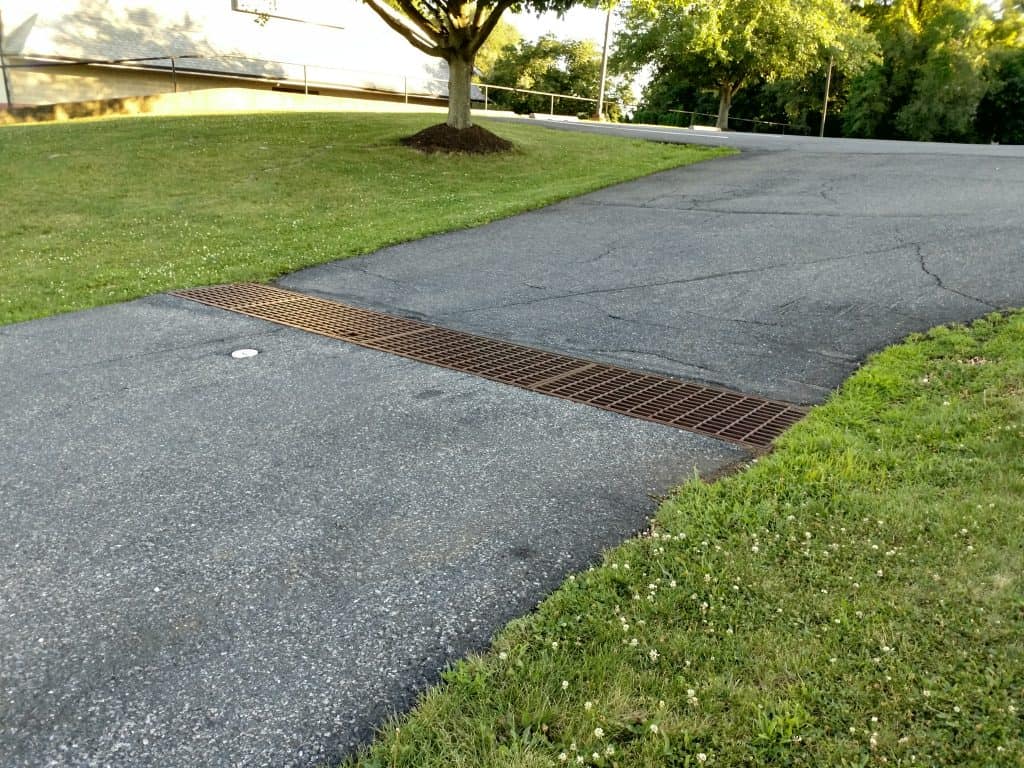Driveway Drainage
Installing a drainage system is an important part of any new or existing infrastructure. Especially when considering driveways. When a driveway slopes toward the foundation or into a low garage, it is a good indicator that future flood mediation will be needed. A floor drain may come to mind as the obvious answer to this water runoff problem. However, there is only one issue, floor drains have a relatively small open surface area. A trench drain or linear drain, on the other hand, can stretch across the entire driveway effectively stopping the water flow before it can harm your basement, foundation, or nearby structures.
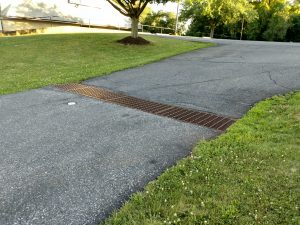
What Is A Trench Drain?
A trench drain moves water away from a specified location in order to prevent hazards or damage to the surrounding infrastructure. This function makes them an ideal choice for driveway drainage. Typically made from a preformed channel and grating, they are installed in an excavated trench and then set in concrete to prevent movement.
These drainage channels are available as pre-sloped or neutral depending on the needs of the application. A pre-sloped system is a standard in driveway drains. Their widths and slopes allow the systems to evacuate a large amount of water quickly using gravity to pull it to the lowest point. Drain trenches are cast from several materials including polymer concrete, plastic, fiberglass, or stainless steel.
Grates are used in conjunction with the channel in order to drain the excess water appropriately and to keep large debris from clogging the drain way. Catch basins and debris baskets are used for easy yearly system maintenance as well.
Poor Driveway Drainage
Several factors cause poor driveway drainage. The most common reasons include improper leveling or grading of the surrounding landscape, incorrect system, wrong grate specified, and inadequate maintenance.
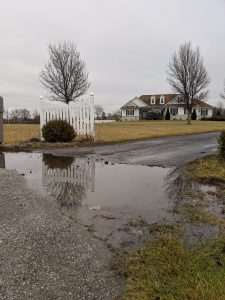
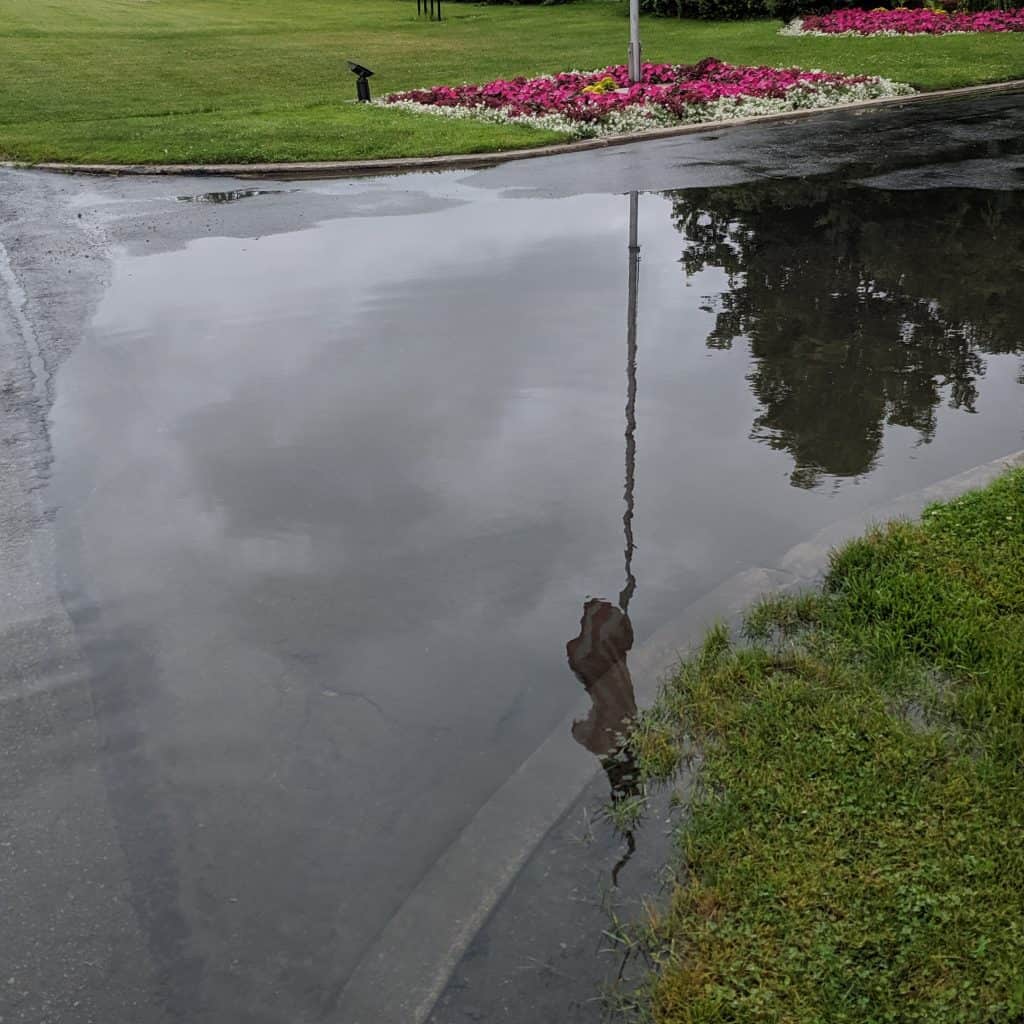
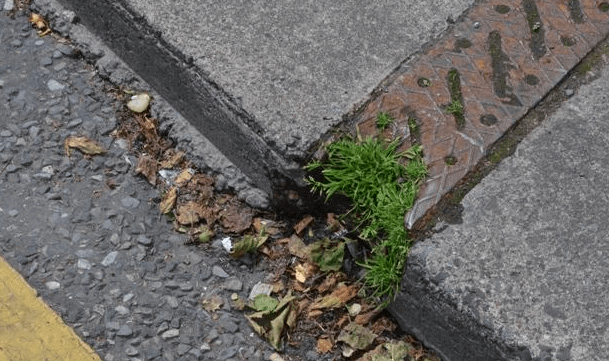
- Improper leveling or grading can cause flooding and water damage to a building’s foundation as well as cause standing water in low areas. This is easily fixed in new constructions, but in existing applications, a trench drain or landscape drainage system are both viable options.
- The dimensions of a system determine the amount of water that can move in and away from the specified location and how quickly. It is important to have a large enough trench drain to meet the needs of the application. Specifying a driveway drainage system that is too small for the water flow in the area is another common mistake that causes flooding.
- In many instances, cost or aesthetics become the main focus of a project instead of functionality. This can cause issues when an application requires a heavy-duty grate option, rather than a light-weight decorative plastic. After identifying what size your application requires, what load class should be the next step in your specifications. Establishing what kind of traffic will be moving over the grates is key to specifying which will be suitable for the project. Equally as important is knowing what environment the trench grates will be exposed to.
- Annual cleaning of your trench drain system is the best way to get the most out of your drainage application. Drainage systems are exposed to the elements and need occasional maintenance to ensure proper water displacement. If left unattended these drain systems become counterproductive and could eventually become unsafe. Regularly cleaning out your trench drains or drainage basins is a great way to ensure your systems are maintained and continue functioning to their best ability.
Questions To Ask

What size system do I need?
Driveway drainage systems primarily fall within 5″-6″ wide, however, if a more robust system is needed 8″-12″ wide trench drains are available. The dimensions required, are dependant upon the amount of stormwater runoff that needs to be redirected.
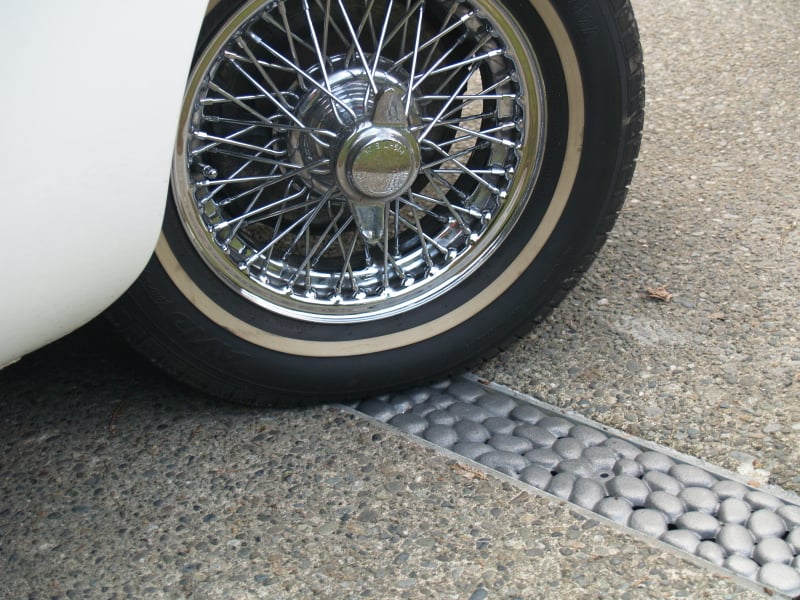
What will be moving over the grates?
Load class is an important factor in driveway drains. A system should have a grating that will not warp or break from the traffic driving over it. Class B grates (cars and lightweight trucks) or class C grates (heavy-duty traffic, H-20 loading) are recommended. Using an inferior load class than required can lead to a failed and possibly damaged system. This can be a very costly mistake and is the most common.
Does the channel and grate material matter?
Specifying what channel and grate system to use is dependant upon the application. Trench drains can be a large, but important investment to a property. Each project has specific needs that are fundamental to its success. Mistakes are often made when the entire scope of a project is not clearly planned out or understood.
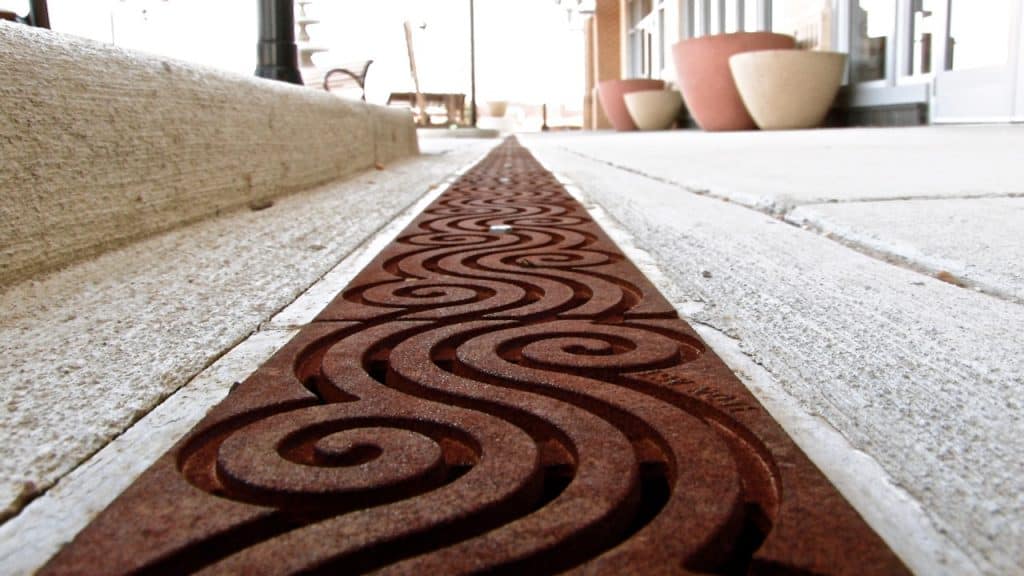
How do I clean out a drain system?
Routine maintenance of your installed trench drain helps to ensure its longevity. Since these drain systems are left exposed to the weather and are in constant use, they require attention. The process generally consists of removing the tops or grates and then extracting the debris that has collected, then replacing the covers. Scheduling an annual cleaning is the best way to keep your investment functioning appropriately.
Are there decorative options for metal driveway grates?
There are a variety of cast iron grates available, including decorative cast-iron grates which allow the same water flow as standard slotted grates while being aesthetically pleasing, making them an ideal match for many driveway applications.
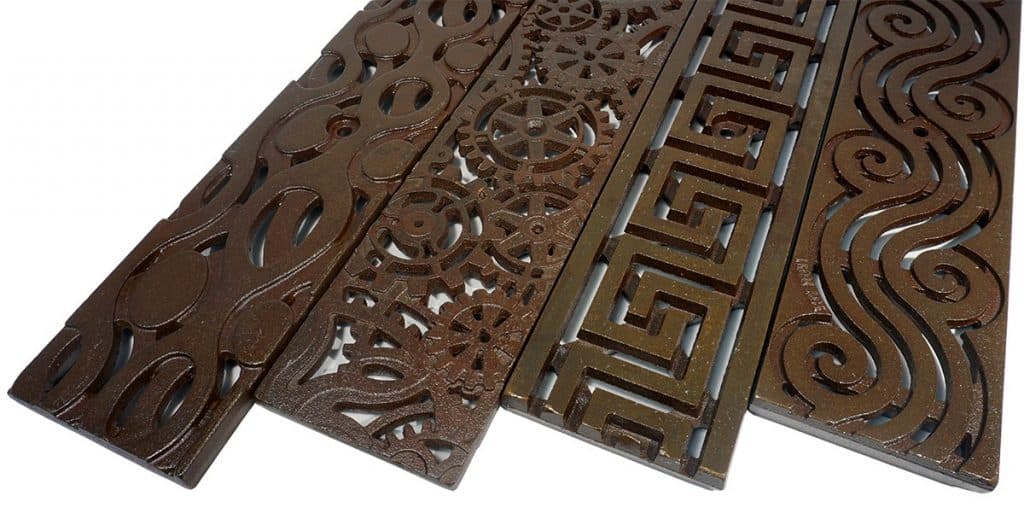
Who installs Trench Drain Systems?
A major point within any project is the physical installation of the trench drain system. This can be a turning point for an application. If done incorrectly, it will hinder the function of the drainage system and could cause multiple issues in the long run. Many systems have install guides that should be followed to accurately position and place the drainage project. Finding a local installer can be a difficult task. However, most often a landscape architect or masonry are both good resources to investigate

Drainage for your driveway is essential to proper water runoff control. Whether it is a new or existing application there is a solution. Installing a trench drain system helps prevent standing water and possible damage to property. Asking the important questions will give you the peace of mind that your specifications will meet your application needs.
Trench Drain Systems is one of the largest distributors in the United States who are committed to providing you with quick solutions to all your surface water runoff problems. Our professional staff can assess your project requirements and quickly offer you competitive pricing and information regarding the products you need. Contact us for a free quote or for further information on drainage solutions visit TrenchDrain.com or DrainageKits.com
Phone: 610-882-3630
Email: [email protected]
Click here for a fast and free quote!

